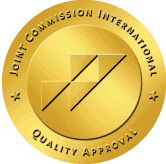Your brain requires thiamine — vitamin B1 — to convert glucose into energy, yet chronic alcohol abuse can silently strip away this essential nutrient, leaving your mind vulnerable to devastating damage. Wet brain syndrome, medically known as Wernicke-Korsakoff syndrome, affects thousands of people who struggle with long-term heavy drinking, creating a cascade of neurological problems that can permanently alter memory, coordination, and cognitive function.
This isn’t just another alcohol-related health warning — it’s a condition that progresses through two distinct stages, beginning with acute confusion and coordination problems before potentially advancing to severe memory loss and confabulation. Alcohol reduces your body’s ability to absorb thiamine through the gastrointestinal tract, creating a dangerous cycle where prolonged drinking starves your brain of the nutrients it needs to function properly.
Understanding wet brain syndrome could help you recognize the early warning signs in yourself or loved ones before irreversible damage occurs.
Wet brain syndrome, medically termed Wernicke-Korsakoff syndrome, represents a severe neurological disorder caused by thiamine (vitamin B1) deficiency. This condition primarily affects individuals who engage in chronic alcohol misuse, creating devastating consequences for brain function and cognitive abilities.
The Connection Between Alcohol Misuse and Wernicke-Korsakoff Syndrome
Chronic alcohol consumption directly impacts your body’s ability to absorb and use thiamine through the gastrointestinal tract. Alcohol interferes with thiamine absorption, storage, and conversion into its active form, creating a cascade of neurological problems.
Your brain requires thiamine to convert glucose into energy effectively. Without adequate thiamine levels, brain cells cannot produce the energy necessary for proper function. This deficiency particularly affects brain regions responsible for memory, coordination, and decision-making processes.
Extended alcohol misuse compounds the problem by:
- Reducing dietary thiamine intake through poor nutrition habits
- Damaging the intestinal lining that absorbs thiamine
- Increasing thiamine requirements due to alcohol metabolism
- Depleting existing thiamine stores in the liver and muscle tissue
The progression from alcohol misuse to wet brain syndrome occurs gradually, often developing over months or years of heavy drinking patterns.
Two Stages of the Condition
Wet brain syndrome manifests through two distinct phases that represent different severity levels of neurological damage.
Wernicke’s Encephalopathy (Acute Stage)
This initial stage presents as a medical emergency requiring immediate intervention. Wernicke’s encephalopathy symptoms include:
- Severe confusion and disorientation
- Loss of muscle coordination (ataxia)
- Abnormal eye movements or paralysis of eye muscles
- Memory difficulties and cognitive impairment
Early recognition and treatment during this stage can potentially reverse some neurological damage through thiamine supplementation and medical care.
Korsakoff’s Psychosis (Chronic Stage)
Without proper treatment, Wernicke’s encephalopathy progresses to Korsakoff’s psychosis, characterized by permanent brain damage. This stage features:
- Severe memory loss, particularly short-term memory formation
- Confabulation (creating false memories to fill memory gaps)
- Inability to learn new information
- Personality changes and behavioral alterations
Korsakoff’s psychosis represents the final stages of wet brain, where cognitive impairments become largely irreversible even with treatment efforts. The transition between stages emphasizes the critical importance of early intervention in preventing permanent neurological damage.
Causes and Risk Factors

Wet brain syndrome develops from specific factors that create thiamine deficiency in your body. Understanding these causes helps you recognize risks and take preventive action before permanent brain damage occurs.
Thiamine Deficiency and Alcohol Abuse
Chronic alcohol consumption remains the primary cause of wet brain syndrome, affecting thiamine absorption and utilization in your body. Alcohol interferes with your gastrointestinal tract’s ability to absorb thiamine properly, reducing the vitamin’s availability for brain metabolism by up to 80% in heavy drinkers.
Your brain requires thiamine to convert glucose into energy effectively. When alcohol disrupts this process, brain cells cannot function properly, leading to the neurological damage characteristic of wet brain. The severity increases with prolonged alcohol abuse, as your body’s thiamine stores become progressively depleted over months or years.
Heavy drinking patterns create multiple pathways to thiamine deficiency:
- Reduced absorption: Alcohol damages your intestinal lining, preventing proper thiamine uptake
- Impaired storage: Your liver’s ability to store thiamine decreases with chronic alcohol exposure
- Increased demand: Alcohol metabolism requires additional thiamine, depleting existing reserves
- Poor nutrition: Alcoholic individuals often replace nutritious meals with alcohol calories
Research shows that individuals consuming more than 35 drinks per week face significantly higher risks of developing wet brain syndrome, though no specific threshold guarantees safety from this condition.
Other Contributing Factors
Several non-alcohol factors can lead to thiamine deficiency and increase your wet brain syndrome risk. These conditions affect different populations and create vulnerability through various mechanisms.
Nutritional disorders represent significant risk factors beyond alcohol abuse:
| Risk Factor | Mechanism | At-Risk Population |
|---|---|---|
| Anorexia nervosa | Severe caloric restriction | Young adults, predominantly female |
| Bulimia | Repeated vomiting depletes nutrients | Adolescents and young adults |
| Malnutrition | Inadequate thiamine intake | Elderly, homeless, economically disadvantaged |
| Prolonged IV feeding | Insufficient vitamin supplementation | Hospitalized patients |
Medical conditions that impair thiamine absorption or metabolism include:
- Gastrointestinal disorders: Crohn’s disease and celiac disease reduce nutrient absorption capacity
- Liver disease: Compromises thiamine storage and processing functions
- Chronic gastritis: Damages the stomach lining, affecting vitamin uptake
- Bariatric surgery: Alters digestive anatomy, reducing the absorption surface area
Demographic factors influence your susceptibility to wet brain syndrome. Advanced age increases vulnerability due to decreased absorption efficiency and medication interactions. Women face higher risks during certain life stages due to hormonal fluctuations affecting thiamine metabolism.
Genetic predisposition plays a role in some cases, with certain individuals having inherited variations in thiamine-processing enzymes. These genetic factors can make you more susceptible to deficiency even with adequate dietary intake.
Emergency situations like prolonged vomiting from any cause can rapidly deplete thiamine stores, creating acute risk for wet brain development. This emphasizes why medical attention becomes critical when experiencing severe gastrointestinal symptoms lasting more than 48 hours.
Recognizing the Symptoms

Wet brain symptoms develop progressively through two distinct stages, each presenting unique warning signs that require immediate attention. Understanding these wet brain syndrome symptoms enables you to identify the condition early and seek critical medical intervention.
Early Stage: Wernicke’s Encephalopathy
Wernicke’s encephalopathy represents the acute phase of wet brain syndrome and constitutes a medical emergency requiring prompt thiamine treatment. You’ll notice confusion and disorientation as primary symptoms of wet brain during this stage, along with an impaired ability to process information effectively.
Coordination and Movement Problems:
- Ataxia causes poor coordination and balance difficulties
- Unsteady walking patterns become apparent
- Fine motor skills deteriorate significantly
Eye Movement Abnormalities:
- Ophthalmoplegia creates paralysis of the eye muscles
- Nystagmus produces rapid, involuntary eye movements
- Double vision occurs frequently
- Difficulty focusing on objects
Mental Status Changes:
- Decreased alertness and apathy
- Trouble concentrating on tasks
- Reduced cognitive processing speed
- Memory formation difficulties
Additional Physical Signs:
- Auditory or visual hallucinations
- Low blood pressure episodes
- Hypothermia in severe cases
- Potential progression to coma without treatment
The early-stage symptoms remain potentially reversible with immediate high-dose thiamine administration, making rapid recognition crucial for preventing permanent brain damage.
Advanced Stage: Korsakoff Syndrome
Korsakoff syndrome develops when Wernicke’s encephalopathy receives inadequate treatment or goes undiagnosed, resulting in permanent brain damage. This advanced stage of wet brain syndrome presents severe cognitive impairments that remain largely irreversible.
Memory-Related Symptoms:
- Profound memory loss, particularly short-term memory
- Anterograde amnesia prevents forming new memories
- Difficulty recalling recent events or conversations
- Confabulation occurs as patients create false stories to fill memory gaps
Cognitive and Behavioral Changes:
- Severe concentration difficulties
- Personality alterations become pronounced
- Repeated speech patterns or actions
- Social withdrawal and isolation
Persistent Physical Symptoms:
- Chronic fatigue and weakness
- Continued coordination problems
- Ongoing hallucinations
- Behavioral unpredictability
| Symptom Category | Wernicke’s Encephalopathy | Korsakoff Syndrome |
|---|---|---|
| Memory Issues | Mild confusion, processing problems | Severe memory loss, inability to form new memories |
| Physical Coordination | Ataxia, balance problems | Persistent coordination difficulties |
| Eye Problems | Ophthalmoplegia, nystagmus, double vision | May persist but be less prominent |
| Mental Status | Confusion, decreased alertness | Confabulation, personality changes |
| Reversibility | Potentially reversible with prompt treatment | Mostly irreversible brain damage |
The final stages of wet brain create devastating cognitive impairments that significantly impact daily functioning. Unlike the early stage, Korsakoff syndrome’s memory problems and neurological damage remain permanent, emphasizing the critical importance of recognizing signs of wet brain during the initial Wernicke’s encephalopathy phase.
Diagnosis and Medical Testing

Diagnosing wet brain syndrome requires a comprehensive medical evaluation that combines clinical assessment with specialized testing. Medical professionals use multiple diagnostic tools to confirm Wernicke-Korsakoff syndrome and differentiate it from other neurological conditions that present similar symptoms.
Clinical Assessment and Medical History
Your doctor begins the diagnostic process by conducting a thorough medical history review and physical examination. They’ll ask detailed questions about your alcohol consumption patterns, dietary habits, and any symptoms you’ve experienced. The clinical evaluation focuses on identifying key signs of wet brain syndrome, including confusion, coordination problems, and eye movement abnormalities.
Medical professionals look for the classic triad of symptoms associated with Wernicke’s encephalopathy: mental confusion, ataxia (loss of coordination), and ocular dysfunction. But, only 16% of patients present with all three symptoms simultaneously, making clinical diagnosis particularly challenging.
Blood Tests and Laboratory Analysis
Laboratory testing plays a crucial role in diagnosing wet brain syndrome, though no single blood test definitively confirms the condition. Your healthcare provider will order several blood tests to evaluate:
| Test Type | Purpose | Findings |
|---|---|---|
| Thiamine levels | Measure vitamin B1 deficiency | Low levels indicate deficiency |
| Liver function tests | Assess alcohol-related damage | Elevated enzymes suggest liver impairment |
| Complete metabolic panel | Check nutritional status | Reveals malnutrition markers |
| Blood glucose levels | Rule out diabetic complications | Normal levels help exclude diabetes |
Blood tests also help identify other conditions that might mimic wet brain symptoms, ensuring accurate diagnosis and appropriate treatment planning.
Neurological Examination
A comprehensive neurological examination evaluates your reflexes, coordination, cognitive function, and memory capacity. Your doctor will test your balance, eye movements, and motor skills to assess the extent of neurological damage. This examination helps distinguish wet brain syndrome from other psychiatric or neurological disorders.
The neurological assessment includes standardized cognitive tests that measure memory formation, recall abilities, and executive function. These tests are particularly important for identifying Korsakoff syndrome, the chronic phase of wet brain that causes severe memory impairment.
Brain Imaging Studies
Magnetic Resonance Imaging (MRI) serves as the most definitive diagnostic tool for wet brain syndrome. MRI scans reveal characteristic brain lesions in specific regions affected by thiamine deficiency, including:
- Thalamus
- Mammillary bodies
- Periventricular gray matter
- Brainstem structures
Advanced MRI techniques, such as diffusion MRI and functional MRI, provide additional information about brain activity and white matter integrity. These imaging studies help determine the severity of brain damage and guide treatment decisions.
CT scans may also be used, though they’re less sensitive than MRI for detecting the subtle brain changes associated with wet brain syndrome. Imaging studies are particularly valuable for monitoring treatment progress and assessing potential reversibility of brain damage.
Neuropsychological Testing
Specialized neuropsychological testing evaluates the extent of cognitive impairment, particularly memory deficits characteristic of Korsakoff syndrome. These assessments measure various cognitive domains, including:
- Short-term and long-term memory
- Learning capacity
- Executive function
- Attention and concentration
Neuropsychological testing helps healthcare providers understand the full scope of cognitive damage and develop appropriate rehabilitation strategies. These tests also serve as baseline measurements for tracking improvement or decline over time.
Importance of Prompt Diagnosis
Early diagnosis of wet brain syndrome is critical because prompt treatment with high-dose thiamine can prevent irreversible brain damage. Medical professionals often begin thiamine supplementation immediately when they suspect wet brain syndrome, even before receiving confirmatory test results. This approach maximizes the chances of reversing neurological symptoms and preventing progression to the chronic Korsakoff phase.
The diagnostic process typically takes several days to complete, but treatment initiation doesn’t wait for final test results. Healthcare providers understand that delayed treatment significantly reduces the likelihood of recovery and increases the risk of permanent cognitive impairment.
Treatment Options and Management
Wet brain treatment requires immediate medical intervention followed by comprehensive long-term care strategies. The success of treatment depends heavily on early recognition and prompt action to address thiamine deficiency and underlying alcohol use disorder.
Emergency Treatment with Thiamine
Emergency treatment for wet brain syndrome centers on aggressive thiamine replacement therapy to halt progressive neurological damage. Healthcare providers administer high-dose thiamine intravenously to ensure rapid absorption and immediate restoration of depleted vitamin B1 levels. This intervention targets the acute symptoms of Wernicke’s encephalopathy, including confusion, coordination problems, and eye movement abnormalities.
Intravenous thiamine doses typically range from 100-500mg daily during the initial treatment phase. Medical professionals often begin thiamine administration immediately upon suspicion of wet brain syndrome, even before confirmatory test results become available. This proactive approach maximizes your chances of reversing neurological symptoms and preventing progression to irreversible Korsakoff syndrome.
Glucose administration frequently accompanies thiamine therapy to support cellular energy production, but thiamine must be given first to prevent worsening of neurological symptoms. Early thiamine treatment can rapidly improve global confusion and some motor impairments, though memory and cognitive recovery may progress more slowly and incompletely in advanced cases.
Long-Term Care Strategies
Long-term management of wet brain syndrome focuses on treating the underlying alcohol use disorder while providing ongoing nutritional and cognitive support. Managing chronic alcohol dependence becomes essential to prevent the progression and recurrence of thiamine deficiency.
Alcohol Treatment Components:
- Medical detoxification under professional supervision ensures safe withdrawal management
- Inpatient or outpatient rehabilitation programs provide structured therapy and relapse prevention strategies
- Medication-assisted treatment using naltrexone, acamprosate, or disulfiram reduces alcohol cravings and supports sustained sobriety
- Behavioral therapies, including cognitive behavioral therapy, address psychological triggers and co-occurring mental health conditions
Nutritional Support Requirements:
- Continued oral thiamine supplementation maintains adequate vitamin B1 levels
- Comprehensive nutritional assessment addresses deficiencies in magnesium, folate, and other essential nutrients
- Balanced dietary planning supports overall brain health and recovery processes
- Regular monitoring ensures the best nutritional status throughout recovery
Cognitive Rehabilitation Services:
- Memory therapy programs help manage persistent cognitive deficits
- Occupational therapy assists with adapting to long-term motor and cognitive limitations
- Physical therapy addresses coordination and balance issues
- Residential care may become necessary for individuals with severe, irreversible cognitive impairments
Even though comprehensive treatment, some neurological impairments from wet brain syndrome may persist permanently, requiring ongoing support and rehabilitation services to optimize quality of life and functional independence.
Prognosis and Recovery Potential
The prognosis for wet brain syndrome varies significantly depending on early detection and treatment initiation. Recovery potential remains highest during the initial stages of Wernicke’s encephalopathy when aggressive thiamine therapy can reverse many neurological symptoms.
Reversibility of Symptoms
Early-stage wet brain symptoms often show dramatic improvement with immediate thiamine supplementation. Wernicke’s encephalopathy responds well to high-dose thiamine therapy, with confusion and eye movement problems potentially resolving within days of treatment initiation. Research indicates that approximately 25% of patients achieve complete recovery when treatment begins during this acute phase.
The reversibility decreases significantly once wet brain progresses to Korsakoff’s psychosis. Memory deficits and cognitive impairments become largely permanent at this advanced stage, though some patients experience slight improvements with continued thiamine therapy and alcohol abstinence. Studies show that 50% of patients demonstrate some improvement in cognitive function with comprehensive treatment, while 25% maintain stable neurological status without further deterioration.
Coordination problems and gait disturbances present mixed recovery outcomes. Walking difficulties may improve partially with physical therapy and thiamine treatment, but complete restoration of motor function rarely occurs in advanced cases. The brain’s ability to compensate for damaged areas determines the extent of symptom reversal.
Life Expectancy Considerations
Life expectancy for individuals with wet brain syndrome spans a wide range based on treatment timing and overall health status. The median survival estimate for alcohol-related Wernicke-Korsakoff syndrome reaches approximately 8 years from diagnosis, according to recent medical studies.
Early detection and treatment significantly improve survival rates. Five-year survival statistics show 68% for men and 79% for women who receive appropriate medical intervention. Ten-year survival rates decrease to 48% for men and 63% for women, highlighting the progressive nature of the condition even though treatment efforts.
Advanced stages of alcoholism with co-occurring health conditions dramatically reduce life expectancy. Individuals in the final stages of wet brain with severe liver disease or end-stage alcoholism may face survival periods as short as 6 months. Over 50% of patients with advanced wet brain syndrome die within 8 years of diagnosis when multiple organ systems are compromised.
Alcohol abstinence plays a crucial role in extending life expectancy. Patients who maintain sobriety while receiving ongoing thiamine supplementation and nutritional support demonstrate significantly better survival outcomes than those who continue drinking. Comprehensive medical care addressing both the neurological symptoms and underlying alcohol use disorder provides the best prognosis for long-term survival.
Prevention Strategies
Preventing wet brain syndrome requires a proactive approach that addresses the root cause of thiamine deficiency while implementing comprehensive lifestyle changes. You can significantly reduce your risk of developing this devastating neurological condition by focusing on alcohol cessation, nutritional support, and early intervention strategies.
Complete Alcohol Abstinence
Complete abstinence from alcohol represents the most effective prevention strategy for wet brain syndrome. Alcohol directly impairs your body’s ability to absorb and use thiamine, creating a cycle of deficiency that leads to neurological damage. If you currently drink heavily, stopping alcohol consumption immediately allows your body to restore proper thiamine absorption and prevents further depletion of this critical vitamin.
For individuals who choose to continue drinking, adhering to moderate consumption guidelines becomes essential. Men can consume no more than two drinks per day, while women can have one drink per day to reduce thiamine interference. But, complete abstinence remains the safest approach for preventing wet brain from alcohol.
Thiamine Supplementation and Nutritional Support
Maintaining adequate thiamine levels through supplementation provides crucial protection against wet brain syndrome development. You can take oral thiamine supplements daily, particularly if you have a history of alcohol use or poor dietary habits. Healthcare providers often recommend 100-300mg of thiamine daily for individuals at elevated risk.
Your nutritional intake extends beyond thiamine alone. A balanced diet rich in whole grains, lean proteins, fruits, and vegetables ensures comprehensive vitamin and mineral support. Focus on thiamine-rich foods including:
- Fortified cereals and bread products
- Pork and lean meats
- Legumes and nuts
- Seeds and whole grains
Nutritional counseling helps you develop sustainable eating patterns that support brain health and reduce wet brain syndrome risk factors.
Early Detection and Medical Intervention
Recognizing early wet brain symptoms enables prompt intervention before permanent damage occurs. You must seek immediate medical attention if you experience confusion, memory problems, coordination difficulties, or unusual eye movements, especially with a history of alcohol use.
Regular medical monitoring becomes critical for high-risk individuals. Blood tests can detect thiamine deficiency before symptoms appear, allowing for preventive treatment. Healthcare providers can identify declining thiamine levels and carry out supplementation protocols before neurological symptoms develop.
Risk Factor Management
Managing underlying conditions that contribute to thiamine deficiency reduces your wet brain syndrome risk. Gastrointestinal disorders, liver disease, and chronic illnesses can impair thiamine absorption. Working with healthcare providers to treat these conditions helps maintain proper vitamin levels.
Age-related factors require special attention, as older adults face increased risk due to reduced absorption capacity and medication interactions. Regular health screenings help identify and address these risk factors before they contribute to thiamine deficiency.
Education and Awareness
Understanding wet brain syndrome symptoms and risk factors empowers you to take preventive action. Education about the connection between chronic alcohol use and neurological damage motivates lifestyle changes that prevent condition development.
Family members and caregivers play vital roles in prevention by recognizing early warning signs and encouraging treatment. Creating awareness about alcoholic wet brain helps identify at-risk individuals before permanent damage occurs.
Ongoing Support and Monitoring
Maintaining long-term prevention requires consistent support systems and regular medical follow-up. Addiction recovery programs provide structured environments for alcohol cessation while addressing underlying psychological factors that contribute to substance abuse.
Regular cognitive assessments help monitor brain function and detect early changes that might indicate developing thiamine deficiency. Blood work monitoring ensures thiamine levels remain adequate, particularly during periods of stress or illness when vitamin requirements increase.
Recovery support groups offer peer connections and accountability that strengthen your commitment to alcohol abstinence and healthy lifestyle choices. These communities provide practical strategies for maintaining sobriety while building social networks that support long-term brain health.
Common Questions
Wet brain syndrome raises numerous concerns for individuals and families affected by chronic alcohol abuse. These frequently asked questions address the most critical aspects of this serious neurological condition.
What are the symptoms of a wet brain?
Wet brain symptoms develop through two distinct stages, each presenting different neurological manifestations that require immediate medical attention.
Wernicke’s encephalopathy symptoms appear first and include:
- Confusion and severe disorientation affecting daily functioning
- Poor muscle coordination leading to unsteady walking and balance problems
- Vision abnormalities including double vision, abnormal eye movements (nystagmus), and drooping eyelids
- Mental status changes ranging from lethargy to coma
- Hypothermia and low blood pressure in severe cases
Korsakoff’s psychosis symptoms emerge when Wernicke’s encephalopathy goes untreated:
- Severe memory impairments preventing formation of new memories (anterograde amnesia)
- Confabulation where you unconsciously create false stories to fill memory gaps
- Visual and auditory hallucinations
- Repetitive speech patterns and behaviors
- Emotional apathy and poor decision-making abilities
- Loss of insight into your condition
Signs of wet brain often overlap between stages, with approximately 90% of individuals progressing from stage 1 to stage 2 symptoms without proper treatment. The alcoholic wet brain stages demonstrate how thiamine deficiency progressively damages brain tissue, particularly affecting memory centers and coordination areas.
What is the life expectancy of a wet brain patient?
Life expectancy for wet brain patients varies significantly based on treatment timing, overall health status, and the presence of co-occurring medical conditions.
Median survival estimates for alcohol-related Wernicke-Korsakoff syndrome reach approximately 8 years from diagnosis. But, several factors influence this prognosis:
- Early detection cases: Patients receiving immediate thiamine treatment during Wernicke’s encephalopathy show dramatically improved survival rates
- Advanced stages: Individuals in late-stage alcoholism with multiple health complications may face survival periods as short as 6 months
- Treatment compliance: Those maintaining alcohol abstinence while receiving ongoing medical care demonstrate significantly better outcomes
Recovery statistics indicate that when caught early enough:
- 25% of patients achieve complete recovery
- 50% experience notable improvement in symptoms
- 25% maintain stable condition without further deterioration
Final stages of wet brain typically occur when Korsakoff’s psychosis becomes severe, affecting not only cognitive function but also cardiovascular and central nervous system operations. At this point, the condition becomes generally fatal without comprehensive medical intervention.
Is there any cure for wet brain?
There’s no complete cure for wet brain once permanent brain damage occurs, but early intervention can reverse many symptoms and prevent further deterioration.
Immediate thiamine replacement serves as the primary treatment approach:
- High-dose thiamine administered intravenously provides rapid absorption
- Treatment must begin immediately upon symptom recognition
- Wernicke’s encephalopathy symptoms can be partially or completely reversed with prompt intervention
- Korsakoff’s psychosis symptoms remain largely irreversible once established
Wet brain treatment protocols include:
- Emergency thiamine therapy: 500-1000mg daily administered intravenously
- Nutritional rehabilitation: Comprehensive vitamin supplementation addressing multiple deficiencies
- Alcohol cessation programs: Medical detoxification and rehabilitation services
- Supportive care: Physical and occupational therapy for coordination recovery
Treatment limitations become apparent once the condition progresses:
- Memory deficits in Korsakoff’s psychosis typically remain permanent
- Cognitive rehabilitation can help patients adapt to memory impairments
- Ongoing medical supervision prevents further neurological damage
- Long-term care facilities may be required for severe cases
Success rates depend heavily on intervention timing, with the best outcomes occurring when treatment begins during the acute Wernicke’s phase. Once wet brain syndrome reaches advanced stages, treatment focuses on symptom management and preventing additional complications rather than achieving complete recovery.
Contact Assure Recovery
The intricate connection between alcohol and brain health, particularly with conditions like ‘wet brain’ syndrome, underscores why professional support is so vital. If you’re concerned about early warning signs, or if you’re ready to break free from the grip of chronic alcohol abuse, please understand that recovery is not just possible – it’s a journey you don’t have to walk alone. Take the proactive step to safeguard your brain and your future. Contact Assure Recovery today to speak with our compassionate team and explore your options for lasting recovery.



